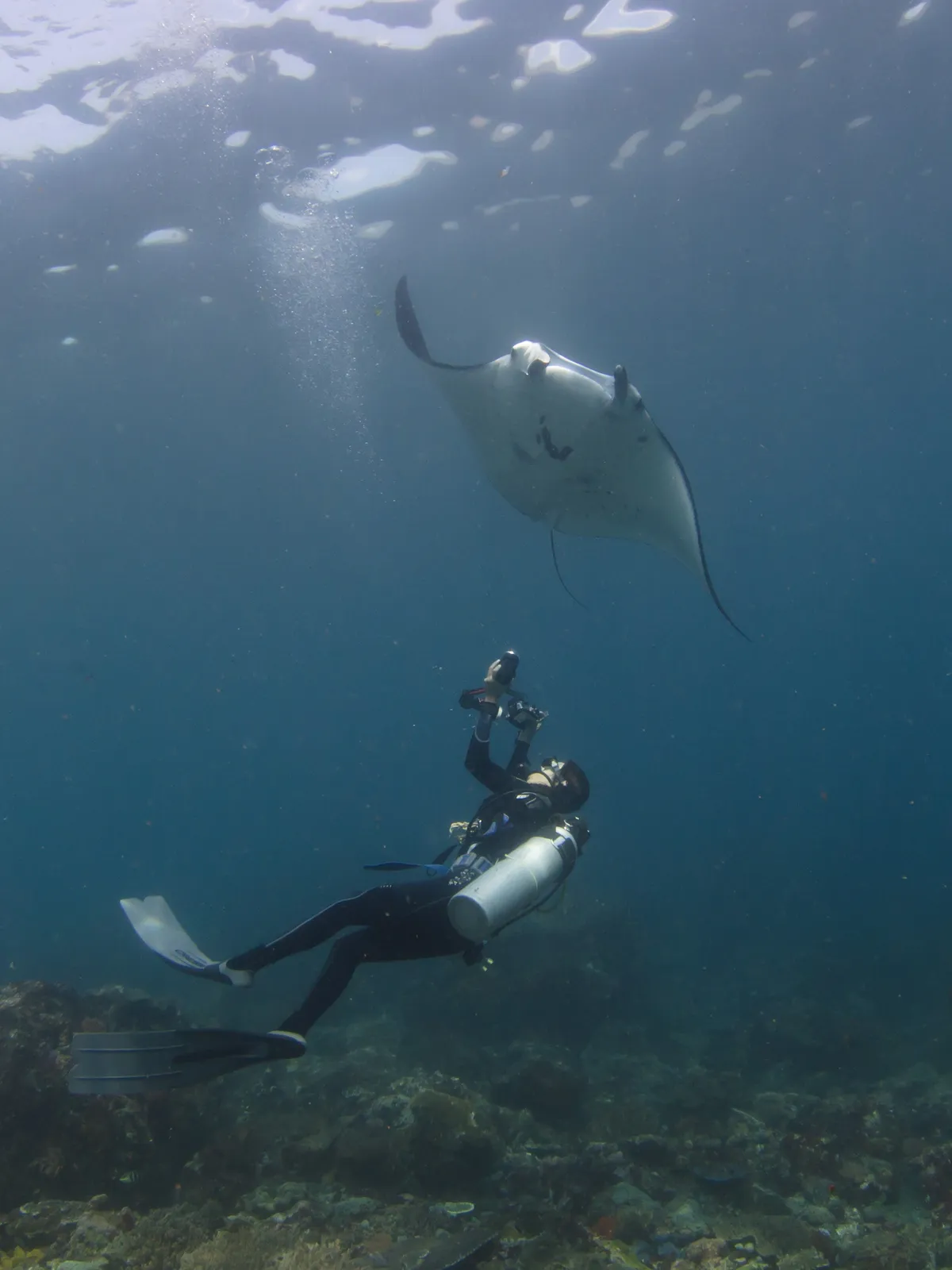New research shows that reef manta rays in Nusa Penida and Komodo National Park could be ingesting up to 63 pieces of plastic per hour of feeding, and whale sharks, which seasonally aggregate in Java, could be ingesting up to 137 pieces per hour.
The study found that plastic abundance was also 44 times higher during the rainy season, as plastic debris is washed into rivers and then the sea. The waters of Nusa Penida, an island southeast of Bali, were the worst affected by this seasonal difference.
Manta rays and whale sharks are filter-feeders, swimming close to the water surface where prey (plankton and krill) congregate, and sieving nutrient-rich water through their gills as they swim. Filter-feeders swallow hundreds to thousands of cubic meters of water every day, which increases their exposure to plastic debris that accumulates at the water surface.
The researchers estimated the amount of microplastics found in the waters off Nusa Penida, Komodo National Park, and East Java in Indonesia by using a plankton net to trawl for plastic at the top 50cm of the water column, mimicking the filter-feeding method of mantra rays and whale sharks.
They also counted any plastic debris visible at the surface from a boat. Based on this, the researchers calculated how much microplastic reef manta rays and whale sharks may be ingesting.

The study found that the majority of plastic pollution were hard fragments, and thin and bendable films from single-use bags and wrappers. 80% of the plastic recorded were microplastics smaller than 5mm.
“With time, plastics break down into smaller pieces called microplastics that large marine filter feeders might accidentally scoop up because they float among their prey,” says Elitza Germanov, lead author of the paper. “Manta rays and whale sharks can ingest microplastics directly from polluted water or indirectly through the contaminated plankton they feed on.”
Manta ray excrement and bile also tested positive for plastics, indicating that plastics are easily ingested when filter-feeding and suggests that these marine giants cannot distinguish between plastic and plankton. The presence of plastics in manta ray faeces has concerned marine biologists, as these likely expose the animal to toxic chemicals and pollutants found in the plastics while in the animal’s digestive system.
The accumulation of toxic substances found in plastic can alter the biological functioning of animals, including growth, development, and reproduction. Larger plastic particles can block nutrient absorption and cause damage to the digestive tract of animals.
Following from the release of Blue Planet 2, there is an increased awareness of the impact that harmful plastic pollution has on the marine environment. The effect of plastic and microplastics on large, filter-feeding marine wildlife is not well known.
“It is difficult to assess how much plastic manta rays and whale sharks actually ingest because conventional methods used to study animal diets, such as stomach analysis, are unsuitable for threatened species like these,” says Neil Loneragan, professor of marine ecology and conservation at Murdoch University
Related content
Plastics:
- Everything you need to know about microplastics
- News (2019): Rise of ocean plastic revealed via 60 years of data
- News (2019): New River Thames pollution data finds majority of litter found is single-use
Manta rays:
- 12 amazing facts you might not know about manta rays
- News (2019): Reef manta ray recorded for first time in eastern Pacific
Whale sharks:
Whale sharks and reef manta rays are listed as Endangered and Vulnerable respectively on the IUCN Red List. Populations of these species are decreasing in the wild due to targeted or accidental capture from commercial fisheries.
“We now know that, through exposure to toxic substances, plastic contamination has the potential to further reduce the population numbers of these threatened animals because they reproduce slowly and have few offspring throughout their lives,” says Germanov.

The study highlights the seasonal differences in plastic abundance between the wet and dry seasons, particularly in the waters of Nusa Penida.
Dr I. Gede Hedrawan, an Indonesian plastics researcher from Bali’s Udayana University and an author on this study, adds “the seasonal variability in plastic pollution shows what a difference it would make to clean up river beds before the rainy season begins. Local authorities could also prohibit any waste disposal in areas around water sources. We welcome Bali’s recent ban on single-use plastic bags, straws and take away containers, although the law is yet to reach its full effect and spread to smaller businesses.”
Read the full paper in Frontiers in Marine Science.
Main image: Reef manta ray feeding amongst plastic debris. Manta rays are filter-feeders and may accidentally ingest harmful microplastics. © Andrea Marshall, Marine Megafauna Foundation